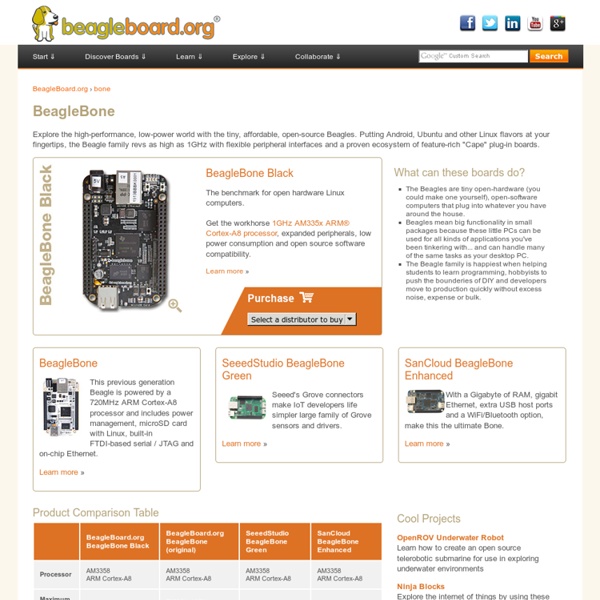UPGRADE INDUSTRIES
Pinguino-Wiki
Village Telco » Mesh Potato
Mesh Potato Click for larger view The Mesh Potato is a device for providing low-cost telephony and Internet in areas where alternative access either doesn’t exist or is too expensive. It is a marriage of a low-cost wireless access point (AP) capable of running a mesh networking protocol with an Analog Telephony Adapter (ATA).Here is the story of how the idea of the Mesh Potato came about. The first prototypes of the Mesh Potato were built in June of 2009, almost exactly a year after the Mesh Potato concept was conceived of. The production Mesh Potato can be seen at the right. The Mesh Potato went on sale in September 2010 and can be ordered through the online store of this website. Mesh Potato Features Specifications Overview Atheros AR2317 system on a Chip (SoC)Silicon labs FXS port chipsetMIPS 4k processor 180 MHzOne 10/100Mbit LAN port8 MByte Serial Flash EEPROM16 MByte RAM Wireless LAN Interfaces/Ports LAN Port : 1 x RJ-45FXS Port : 1 x RJ-11 Firmware Environmental Electrical Physical
CutyCapt - A Qt WebKit Web Page Rendering Capture Utility
Open Source Hardware Initiative
As both an electrical engineer and professional software developer, I'd like to start an open source hardware movement similar to the open source software movement that has currently been happening. I've seen ideas similar to this from other people before, although not well thought out nor articulated correctly, and definitely not the same thoughts I have about the subject. This (somewhat long) post is a summary of my ideas, hoping to get some feedback from other people. Open source software has been around for awhile. Open source hardware obviously has different requirements. Many people believe that open source hardware has to be all about integrated circuits (IC's) on chips. Now that the whole IC issue is out of the way, back to the PCB router. The users can get a desktop PCB router by either 1) Downloading open source plans for the router and building it himself. 2) Having his/her friend who already built one build a replicate. Sorry for writing a huge essay here.
Welcome
arducopter - Arduino-based autopilot for mulitrotor craft, from quadcopters to traditional helis
The DIY Drones development team is proud to bring you the ultimate open source quadcopter and helicopter UAV! ArduCopter's autopilot is based on APM 2, the most sophisticated IMU-based open source autopilot on the market. It provides full UAV functionality, with scripted waypoints, Ground Station and more. Advanced GCS Waypoints! See the Wiki manual linked above for full details and instructions. Sample video: GPS position and altitude hold See some other ArduCopter videos here! Order ArduCopter kits and parts here or buy them ready-to-fly here. ArduCopter Platform Feature List
Google’s Bigtable Distributed Storage System, Pt. I
Google rolls out new applications to millions of users with surprising frequency, which is pretty amazing all by itself. Yet when you look at the variety of the applications, ranging from data-sucking behemoths like webcrawling to intimate apps like Personalized Search and Writely it is even more startling. How does the Google architecture manage the conflicting requirements of such a wide range of workloads? Bigtable, a Google-developed distributed storage system for structured data, is a big piece of the answer. Isn’t The Google File System The Answer? If It’s a Storage System, Where Are The Disks? This article is adapted from a paper entitled Bigtable: A Distributed Storage System for Structured Data(PDF) that was just released. Scale To Thousands Of Terabytes And Servers Every good product solves a problem. So, It’s A Database, Right? So It’s The Mother Of All Spreadsheets? So Far, I Get It. So Bigtable Stores Everything Forever . . . GFS. Comments, as always, welcome.
Main Page
Programmer’s Toolbox Part 3: Consistent Hashing « tomkleinpeter.com
Next up in the toolbox series is an idea so good it deserves an entire article all to itself: consistent hashing. Let’s say you’re a hot startup and your database is starting to slow down. You decide to cache some results so that you can render web pages more quickly. If you want your cache to use multiple servers (scale horizontally, in the biz), you’ll need some way of picking the right server for a particular key. If you only have 5 to 10 minutes allocated for this problem on your development schedule, you’ll end up using what is known as the naïve solution: put your N server IPs in an array and pick one using key % N. I kid, I kid — I know you don’t have a development schedule. Anyway, this ultra simple solution has some nice characteristics and may be the right thing to do. You’ll have a second problem if your cache is read-through or you have some sort of processing occurring alongside your cached data. As I said, though, that might be OK. In a nutshell, here is how it works.
MyOpenRouter : The Premier Online Community for NETGEAR's WNR3500L & WGR614L Open Source Router - DD-WRT, OpenWRT, & Tomato Firmware



